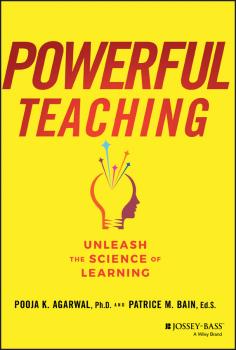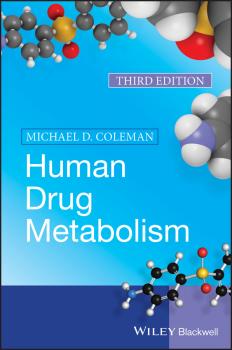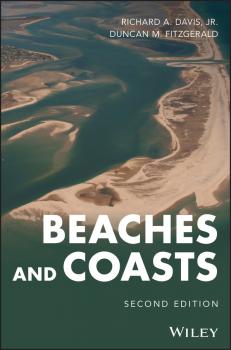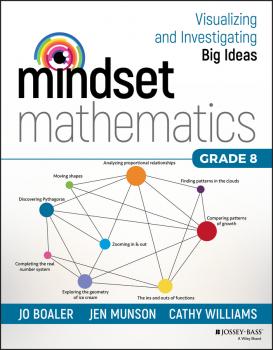ТОП просматриваемых книг сайта:
Прочая образовательная литература
Различные книги в жанре Прочая образовательная литература, доступные для чтения и скачиванияАннотация
Find out how to apply learning science in online classes The concept of small teaching is simple: small and strategic changes have enormous power to improve student learning. Instructors face unique and specific challenges when teaching an online course. This book offers small teaching strategies that will positively impact the online classroom. This book outlines practical and feasible applications of theoretical principles to help your online students learn. It includes current best practices around educational technologies, strategies to build community and collaboration, and minor changes you can make in your online teaching practice, small but impactful adjustments that result in significant learning gains. • Explains how you can support your online students • Helps your students find success in this non-traditional learning environment • Covers online and blended learning • Addresses specific challenges that online instructors face in higher education Small Teaching Online presents research-based teaching techniques from an online instructional design expert and the bestselling author of Small Teaching.
Аннотация
Unleash powerful teaching and the science of learning in your classroom Powerful Teaching: Unleash the Science of Learning empowers educators to harness rigorous research on how students learn and unleash it in their classrooms. In this book, cognitive scientist Pooja K. Agarwal, Ph. D. , and veteran K–12 teacher Patrice M. Bain, Ed. S. , decipher cognitive science research and illustrate ways to successfully apply the science of learning in classrooms settings. This practical resource is filled with evidence-based strategies that are easily implemented in less than a minute—without additional prepping, grading, or funding! Research demonstrates that these powerful strategies raise student achievement by a letter grade or more; boost learning for diverse students, grade levels, and subject areas; and enhance students’ higher order learning and transfer of knowledge beyond the classroom. Drawing on a fifteen-year scientist-teacher collaboration, more than 100 years of research on learning, and rich experiences from educators in K–12 and higher education, the authors present highly accessible step-by-step guidance on how to transform teaching with four essential strategies: Retrieval practice, spacing, interleaving, and feedback-driven metacognition. With Powerful Teaching , you will: Develop a deep understanding of powerful teaching strategies based on the science of learning Gain insight from real-world examples of how evidence-based strategies are being implemented in a variety of academic settings Think critically about your current teaching practices from a research-based perspective Develop tools to share the science of learning with students and parents, ensuring success inside and outside the classroom Powerful Teaching: Unleash the Science of Learning is an indispensable resource for educators who want to take their instruction to the next level. Equipped with scientific knowledge and evidence-based tools, turn your teaching into powerful teaching and unleash student learning in your classroom.
Аннотация
Provides a timely update to a key textbook on human drug metabolism The third edition of this comprehensive book covers basic concepts of teaching drug metabolism, starting from extreme clinical consequences to systems and mechanisms and toxicity. It provides an invaluable introduction to the core areas of pharmacology and examines recent progress and advances in this fast moving field and its clinical impact. Human Drug Metabolism, 3rd Edition begins by covering basic concepts such as clearance and bioavailability, and looks at the evolution of biotransformation, and how drugs fit into this carefully managed biological environment. More information on how cytochrome P450s function and how they are modulated at the sub-cellular level is offered in this new edition. The book also introduces helpful concepts for those struggling with the relationship of pharmacology to physiology, as well as the inhibition of biotransformational activity. Recent advances in knowledge of a number of other metabolizing systems are covered, including glucuronidation and sulphation, along with the main drug transporters. Also, themes from the last edition are developed in an attempt to chart the progress of personalized medicine from concepts towards practical inclusion in routine therapeutics. The last chapter focuses on our understanding of how and why drugs injure us, both in predictable and unpredictable ways. Appendix A highlights some practical approaches employed in both drug metabolism research and drug discovery, whilst Appendix B outlines the metabolism of some drugs of abuse. Appendix C advises on formal examination preparation and Appendix D lists some substrates, inducers and inhibitors of the major human cytochrome P450s. Fully updated to reflect advances in the scientific field of drug metabolism and its clinical impact Reflects refinements in the author's teaching method, particularly with respect to helping students understand biological systems and how they operate Illustrates the growing relationship between drug metabolism and personalized medicine Includes recent developments in drug discovery, genomics, and stem cell technologies Human Drug Metabolism, 3rd Edition is an excellent book for advanced undergraduate and graduate students in molecular biology, biochemistry, pharmacology, pharmacy, and toxicology. It will also appeal to professionals interested in an introduction to this field, or who want to learn more about these bench-to-bedside topics to apply it to their practice.
Аннотация
A new edition of a unique textbook that provides an exhaustive treatment of the world's different coasts—with focus on climate change sea-level rise Coastlines of the world are as diverse and complex as any geological setting on Earth, and understanding them is extremely important. Beaches and Coasts, Second Edition is an exciting and unique textbook that covers the world’s different coasts and details the highly varied processes that have shaped them. This new edition emphasizes the future susceptibility of coast to climate driven stresses and decreasing sediment supplies, and considers various aspects of coastal management that are and/or that need to be undertaken. Seeking to better educate students and readers about the sustainability of coast and coastal environments, this exciting and unique book offers enlightening coverage of: the Earth’s mobile crust; sediments of coastal environments; impacts of sea level change; weather systems and the effects of storms; the influence of wave energy and different tidal regimes; river deltas; coastal bays; estuaries and lagoons; tidal flats; coastal wetlands; beach and nearshore areas; coastal barriers; tidal inlets; glaciated coasts; and rocky coasts. Takes an extensive look at the world's varied coasts and covers the many processes that have shaped them over time Shows how coastal processes and landform evolution are expected to be impacted by climate change Includes new coverage of Hurricane Katrina and the 2005 flooding of New Orleans, Hurricane Sandy and its affect on New York and the earthquake and tsunami in the Indian Ocean and Tohoku Lavishly illustrated with over 400 color photographs and figures Draws on a wealth of author experience that broadens the content of chapters and provides for numerous and varied examples Beaches and Coasts, Second Edition is an excellent text for undergraduate and graduate students of coastal geology, coastal processes and coastal environments.
Аннотация
Rivers are the great shapers of terrestrial landscapes. Very few points on Earth above sea level do not lie within a drainage basin. Even points distant from the nearest channel are likely to be influenced by that channel. Tectonic uplift raises rock thousands of meters above sea level. Precipitation falling on the uplifted terrain concentrates into channels that carry sediment downward to the oceans and influence the steepness of adjacent hill slopes by governing the rate at which the landscape incises. Rivers migrate laterally across lowlands, creating a complex topography of terraces, floodplain wetlands and channels. Subtle differences in elevation, grain size, and soil moisture across this topography control the movement of ground water and the distribution of plants and animals. Rivers in the Landscape, Second Edition, emphasizes general principles and conceptual models, as well as concrete examples of each topic drawn from the extensive literature on river process and form. The book is suitable for use as a course text or a general reference on rivers. Aimed at advanced undergraduate students, graduate students, and professionals looking for a concise summary of physical aspects of rivers, Rivers in the Landscape is designed to: emphasize the connectivity between rivers and the greater landscape by explicitly considering the interactions between rivers and tectonics, climate, biota, and human activities; provide a concise summary of the current state of knowledge for physical process and form in rivers; reflect the diversity of river environments, from mountainous, headwater channels to large, lowland, floodplain rivers and from the arctic to the tropics; reflect the diverse methods that scientists use to characterize and understand river process and form, including remote sensing, field measurements, physical experiments, and numerical simulations; reflect the increasing emphasis on quantification in fluvial geomorphology and the study of Earth surfaces in general; provide both an introduction to the classic, foundational papers on each topic, and a guide to the latest, particularly insightful and integrative references.
Аннотация
Enlightens readers on the realities of global atmospheric change, including global warming and poor air quality Climate change and air pollution are two of the most pressing issues facing Mankind. This book gives undergraduate and graduate students, researchers and professionals working in the science and policy of pollution, climate change and air quality a broad and up-to-date account of the processes that occur in the atmosphere, how these are changing as Man’s relentless use of natural resources continues, and what effects these changes are having on the Earth’s climate and the quality of the air we breathe. Written by an international team of experts, Atmospheric Science for Environmental Scientists, 2 nd Edition provides an excellent overview of our current understanding of the state of the Earth’s atmosphere and how it is changing. The first half of the book covers: the climate of the Earth; chemical evolution of the atmosphere; atmospheric energy and the structure of the atmosphere; biogeochemical cycles; and tropospheric chemistry and air pollution. The second half looks at cloud formation and chemistry; particulate matter in the atmosphere; stratospheric chemistry and ozone depletion; boundary layer meteorology and atmospheric dispersion; urban air pollution; and global warming and climate change science. Provides succinct but detailed information on all the important aspects of atmospheric science for students Offers the most up-to-date treatment of key issues such as stratospheric chemistry, urban air pollution, and climate change Each chapter includes basic concepts, end-of-section questions, and more in-depth material Features contributions from the best experts and educators in the field of atmospheric science Atmospheric Science for Environmental Scientists, 2 nd Edition is an invaluable resource for students, teachers, and professionals involved in environmental science. It will also appeal to those interested in learning how the atmosphere works, how humankind is changing its composition, and what effects these changes are leading to.
Аннотация
Covers significant changes in GPS/INS technology, and includes new material on GPS, GNSSs including GPS, Glonass, Galileo, BeiDou, QZSS, and IRNSS/NAViC, and MATLAB programs on square root information filtering (SRIF) This book provides readers with solutions to real-world problems associated with global navigation satellite systems, inertial navigation, and integration. It presents readers with numerous detailed examples and practice problems, including GNSS-aided INS, modeling of gyros and accelerometers, and SBAS and GBAS. This revised fourth edition adds new material on GPS III and RAIM. It also provides updated information on low cost sensors such as MEMS, as well as GLONASS, Galileo, BeiDou, QZSS, and IRNSS/NAViC, and QZSS. Revisions also include added material on the more numerically stable square-root information filter (SRIF) with MATLAB programs and examples from GNSS system state filters such as ensemble time filter with square-root covariance filter (SRCF) of Bierman and Thornton and SigmaRho filter. Global Navigation Satellite Systems, Inertial Navigation, and Integration, 4 th Edition provides: Updates on the significant upgrades in existing GNSS systems, and on other systems currently under advanced development Expanded coverage of basic principles of antenna design, and practical antenna design solutions More information on basic principles of receiver design, and an update of the foundations for code and carrier acquisition and tracking within a GNSS receiver Examples demonstrating independence of Kalman filtering from probability density functions of error sources beyond their means and covariances New coverage of inertial navigation to cover recent technology developments and the mathematical models and methods used in its implementation Wider coverage of GNSS/INS integration, including derivation of a unified GNSS/INS integration model, its MATLAB implementations, and performance evaluation under simulated dynamic conditions Global Navigation Satellite Systems, Inertial Navigation, and Integration, Fourth Edition is intended for people who need a working knowledge of Global Navigation Satellite Systems (GNSS), Inertial Navigation Systems (INS), and the Kalman filtering models and methods used in their integration.
Аннотация
Provides an introduction to the Finite Difference Time Domain method and shows how Python code can be used to implement various simulations This book allows engineering students and practicing engineers to learn the finite-difference time-domain (FDTD) method and properly apply it toward their electromagnetic simulation projects. Each chapter contains a concise explanation of an essential concept and instruction on its implementation into computer code. Included projects increase in complexity, ranging from simulations in free space to propagation in dispersive media. This third edition utilizes the Python programming language, which is becoming the preferred computer language for the engineering and scientific community. Electromagnetic Simulation Using the FDTD Method with Python, Third Edition is written with the goal of enabling readers to learn the FDTD method in a manageable amount of time. Some basic applications of signal processing theory are explained to enhance the effectiveness of FDTD simulation. Topics covered in include one-dimensional simulation with the FDTD method, two-dimensional simulation, and three-dimensional simulation. The book also covers advanced Python features and deep regional hyperthermia treatment planning. Electromagnetic Simulation Using the FDTD Method with Python : Guides the reader from basic programs to complex, three-dimensional programs in a tutorial fashion Includes a rewritten fifth chapter that illustrates the most interesting applications in FDTD and the advanced graphics techniques of Python Covers peripheral topics pertinent to time-domain simulation, such as Z-transforms and the discrete Fourier transform Provides Python simulation programs on an accompanying website An ideal book for senior undergraduate engineering students studying FDTD, Electromagnetic Simulation Using the FDTD Method with Python will also benefit scientists and engineers interested in the subject.
Аннотация
Engage students in mathematics using growth mindset techniques The most challenging parts of teaching mathematics are engaging students and helping them understand the connections between mathematics concepts. In this volume, you'll find a collection of low floor, high ceiling tasks that will help you do just that, by looking at the big ideas at the eighth-grade level through visualization, play, and investigation. During their work with tens of thousands of teachers, authors Jo Boaler, Jen Munson, and Cathy Williams heard the same message—that they want to incorporate more brain science into their math instruction, but they need guidance in the techniques that work best to get across the concepts they needed to teach. So the authors designed Mindset Mathematics around the principle of active student engagement, with tasks that reflect the latest brain science on learning. Open, creative, and visual math tasks have been shown to improve student test scores, and more importantly change their relationship with mathematics and start believing in their own potential. The tasks in Mindset Mathematics reflect the lessons from brain science that: There is no such thing as a math person – anyone can learn mathematics to high levels. Mistakes, struggle and challenge are the most important times for brain growth. Speed is unimportant in mathematics. Mathematics is a visual and beautiful subject, and our brains want to think visually about mathematics. With engaging questions, open-ended tasks, and four-color visuals that will help kids get excited about mathematics, Mindset Mathematics is organized around nine big ideas which emphasize the connections within the Common Core State Standards (CCSS) and can be used with any current curriculum.










